Among my father's collection of hundreds of inkstones, one stands out for its striking all-white appearance. Purchased from a calligraphy shops, this particular inkstone came without any specific identification. My father speculates that it might be a white Duan stone, as few other types of inkstones are known to exhibit such a distinctive white coloration.
White Duan inkstones (known as Tankei in Japanese) are exceedingly rare, with only a select few having ever seen or owned one. The book "Tankei Inkstones" by Shizui Aiura briefly mentions the existence of white Tankei but provides no further details. Interestingly, some inkstones currently marketed in Japan as white Tankei are, in fact, white jade.
One defining characteristic of Duan inkstones is their distinctive coloration. Typically, Duan stones exhibit a purplish or brown hue as their base color, although some may be solid black, blue, or green. Authentic white Duan inkstones are exceptionally rare.
The only definitive statement I could find about white Duan stones was as follows: "White Duan stone is a prestigious inkstone mined from ancient, sealed-off quarries. Most feature transparent white patterns resembling fish brains, giving the entire inkstone the appearance of being made from white stone."
However, this description does not align with the characteristics of the white inkstone in question, as it is solid white with a subtle yellowish tint. Nonetheless, it does display orange, yellow, and purple patterns reminiscent of those found on typical Duan stones.
Eager to solve the mystery, I enlisted my father's help to put it to the test. If it happens to be a Tankei stone, it should do the job of grinding inksticks smoothly.
The first step is to prepare the surface of the inkstone using a mud whetstone before its initial use, as the inkstone may be coated with lacquer to enhance its appearance.

The test confirmed that this white inkstone can grind inksticks. Close observation reveals greenish formations on its surface that resemble fossils. Fossils are often found in high-quality natural whetstones and may contribute to this inkstone's ability to grind inksticks.
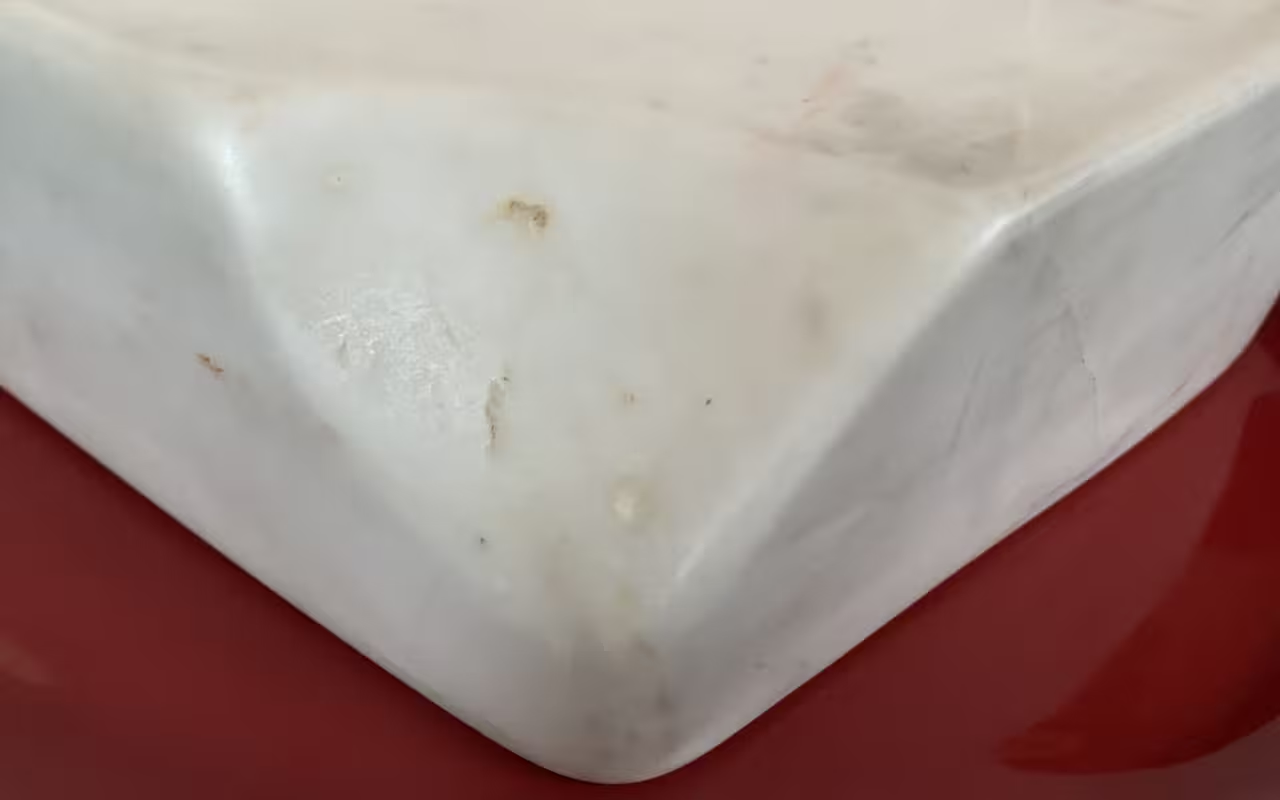
While this test doesn’t confirm its identity as a Duan stone, it does demonstrate its ability to grind inksticks, showing that it’s more than just a decorative piece.
